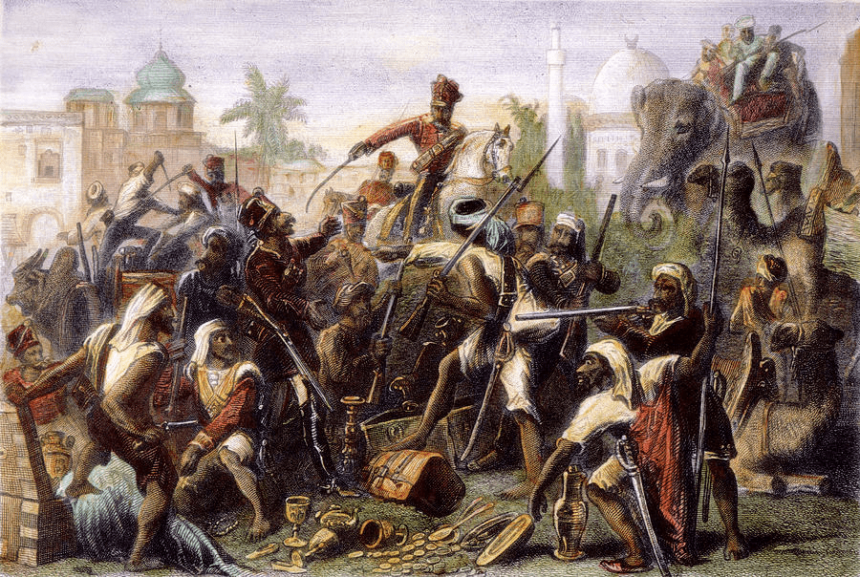A representation of the 1857 Indian Rebellion
Mangal Pandey was an Indian soldier who played a key part in the events immediately preceding the outbreak of the Indian rebellion of 1857. He was a sepoy (infantryman) in the 34th Bengal Native Infantry (BNI) regiment of the British East India Company. In 1984, the Indian government issued a postage stamp to remember him. His life and actions have also been portrayed in several cinematic productions.
The Ministry of Culture tweeted a beautiful video on the life of Mangal Pandey: Watch here:
Pay homage to the Great Indian Freedom Fighter #MangalPandey, who rose against his British officers, disobeyed them and fight for justice. His stories continue to inspire us to stand up against unjust actions. @prahladspatel @secycultureGOI @PMOIndia @PIBCulture @pspoffice pic.twitter.com/vSsndPcfu4
— Ministry of Culture (@MinOfCultureGoI) April 8, 2021
He was born on 19 July 1827 in Nagwa, a village in the upper Ballia district. He had joined the Bengal Army in 1849. In March 1857, he was a private soldier (sepoy) in the 5th Company of the 34th Bengal Native Infantry. He attacked British officers on 29 March 1857. It leads to the first big uprising, which came to be known as the Sepoy Mutiny of 1857, often called the First War of Independence. He revolted after the East India Company introduced a new weapon – the Enfield rifled musket – for its troops. The cartridges, greased with animal fat, were introduced when Mangal Pandey was posted at the garrison in Barrackpore in the mid-1850s. These new cartridges were a source of great discontentment as soldiers had to bite them off before using them. Further, it leads to a mass revolt against the British colonial rulers. During the revolt and scuffle, he was injured by a gunshot. Though he recovered from the wound, he was brought for a British shoddy trial.
When asked whether he had been under the influence of any substances, he stated steadfastly that he had mutinied on his own accord and that no other person had played any part in encouraging him. He was sentenced to death by hanging on 8 April 1857 along with Jemadar Ishwari Prasad.

